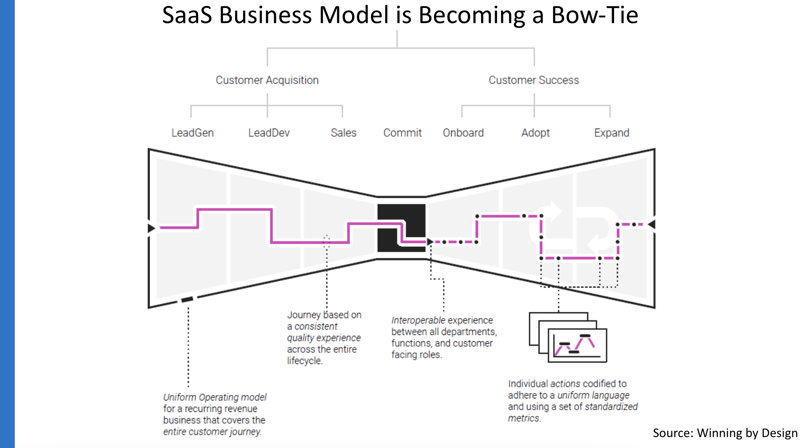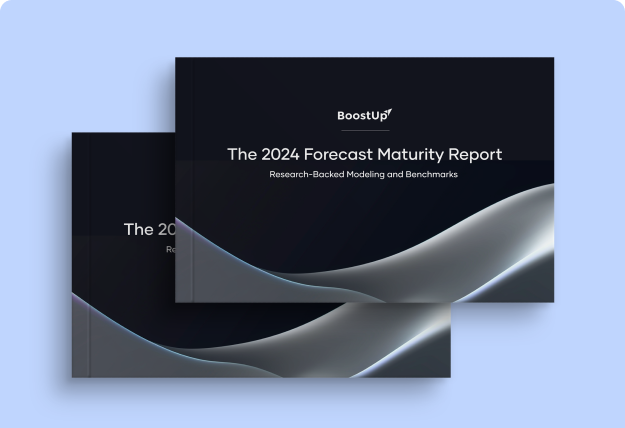The Revenue Blog /
How to Solve the Complexities of Modern Enterprise Forecasting
How to Solve the Complexities of Modern Enterprise Forecasting

Topics covered in this article
With customer success now a revenue driver, it's time to change
SaaS Forecasting is not what it used to be.
With a heightened focus on the entire customer lifecycle and the integration of customer success, renewals, upsells, and expansions into the go-to-market strategy there is a new complexity that every company now faces.
Kevin Leighton, VP of Revenue Operations at VidMob and former Group VP of Global Revenue Strategy and Operations at Rimini Street describes the new SaaS model as a “bow tie.” Beginning with lead generation, converging into the commit, and then expanding again through onboarding and expansion

Lucas Lam, Product & Solutions Director at BoostUp adds that the transition of Customer Success into a role that is now responsible for revenue adds further complexity saying,
“You’re also asking a different set of team members to manage that part of your revenue. This isn’t AEs that you’re hiring with a known history of managing transactions and sales cycles… these are Customer Success people who you’ve usually hired to build great relationships and figure out how to solve problems. Now we’re asking them to build a new skillset around managing revenue and building forecasts with the same rigor that we’ve expected on the sales side.
So given the changes in your revenue sources, team responsibilities, go-to-market strategies, as well as the uncertain economic future, what is the best way for enterprises to forecast?
Your typical sales data is no longer enough
“CRM data is no longer enough,” says Kevin, “You need to add more data sources, which just adds complexity, and then you need to add computing power in the sense of Machine Learning and AI. So what we’re really seeing is the emergence of this Revenue Operations and Intelligence Platform.”
The data traditionally used in forecasting, and likely pulled from Salesforce, like stage, meetings held, titles involved, or even number of conversations had is no longer enough to accurately forecast, especially once the customer success side of the equation is involved.
Now, deeper insight is needed. The aforementioned RevOps platforms and their AI capabilities can mine deep insights like communication sentiments, multi-threadedness, meeting attendance, inactivity, and engagement from recorded conversations, email exchanges, and even product usage data. Then, they use their machine learning to build models and make predictions at scale.
How to make your revenue process easier
It turns out that getting your customer success team up to speed on your sales processes may not be so difficult after all. Much like implementing new tools on your sales side, it's imperative that you introduce data cleanliness, standardization, and processes to ensure that you get the data you need to forecast.
Again, Revenue Operations and Intelligence Platforms can help with this by completely removing the human element. Since they are plugged into every aspect of your sales process, RO&I platforms can automatically capture the data you need, without the risk of human error.
Want to experience BoostUp for yourself? Take the self-guided product tour.





-Photoroom.png)